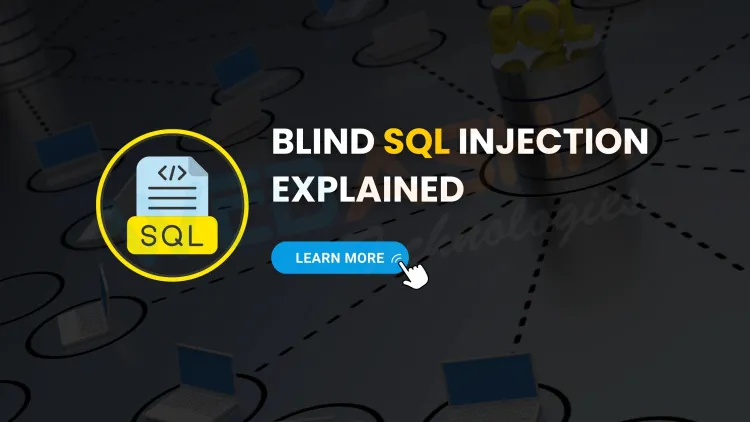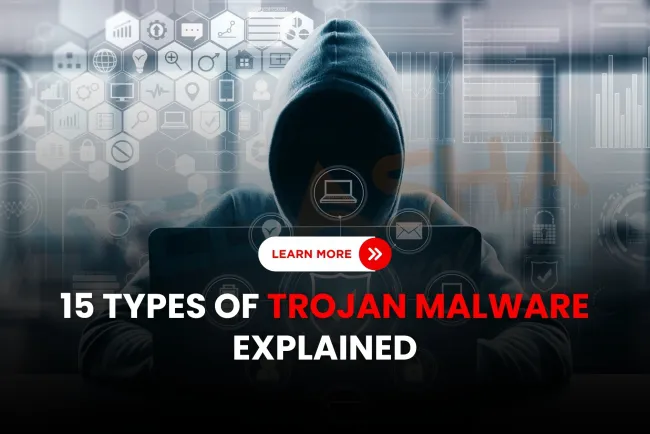How Blind SQL Injection Works | Scenario with Time-Based Example
Discover how blind SQL injection works using a real-world CEH training example. Learn how time-based SQLi can help you detect vulnerabilities even without visible output. Includes step-by-step explanation and tips for ethical hacking aspirants.

Table of Contents
- Introduction: A Silent Clue in the Code
- What Is Blind SQL Injection?
- The Challenge: A Wall of Silence
- How Time-Based Blind SQLi Works
- Realization: This Is What the CEH Exam Tests
- Why Blind SQL Injection Still Matters in 2025
- How to Practice Time-Based Blind SQLi Safely
- Lessons Learned from This Red Team Moment
- Conclusion
- Frequently Asked Questions (FAQs)
Introduction: A Silent Clue in the Code
As a budding ethical hacker enrolled in my Certified Ethical Hacker (CEH) training, I was exploring a vulnerable web application for a Capture the Flag (CTF) exercise. The objective was simple: identify an SQL injection vulnerability. But as I started probing, I realized—no output, no error messages, no visual clues. Just silence.
Most would move on. I didn’t.
This was my first real brush with Blind SQL Injection—a stealthy technique that doesn’t give immediate results but whispers its secrets if you know how to listen.
What Is Blind SQL Injection?
Blind SQL Injection (Blind SQLi) is a type of SQL injection attack where the attacker cannot directly see the result of the injection in the application’s response. Unlike error-based or UNION-based SQLi, where output or error messages can be leveraged to extract data, blind SQLi relies on observing side effects—especially response time.
There are two common types:
-
Boolean-based blind SQLi
-
Time-based blind SQLi (this is what I encountered)
The Challenge: A Wall of Silence
The vulnerable form was a login page. Every input I tried responded with the same vague error—"Invalid login credentials." Even when I inserted ' OR '1'='1, nothing happened.
So I changed tactics.
I entered this payload:
' OR IF(1=1, SLEEP(5), 0) -- -
Then, I submitted the form. The application took exactly 5 seconds to respond.
Interesting.
Next, I submitted:
' OR IF(1=2, SLEEP(5), 0) -- -
This time, the response was instant.
That was the breakthrough.
How Time-Based Blind SQLi Works
Time-based blind SQLi is an ingenious method. Instead of relying on output, it sends queries that intentionally delay the database’s response if a condition is true. The delay is your signal.
Think of it as communicating through silence. No data is shown, but the delay is the data.
In the CEH course, this is explained as a covert channel technique. It’s subtle, but powerful—perfect for bypassing applications with strong output sanitization.
Realization: This Is What the CEH Exam Tests
Later, I stumbled upon a question in a CEH practice exam:
“You know the application is vulnerable to SQL injection, but you cannot see the result. You send a SQL query to the database that causes a delay. What type of SQL injection is this?”
The answer?
Blind SQLi.
(Specifically, Time-based Blind SQLi, though the exam doesn’t always require that level of granularity.)
Why Blind SQL Injection Still Matters in 2025
In a world of advanced WAFs (Web Application Firewalls), error masking, and output encoding, attackers are forced to get creative. Blind SQLi still works because:
-
Apps still interact with databases.
-
Output sanitization doesn’t prevent timing leaks.
-
Developers often overlook side-channel attacks.
And for ethical hackers, penetration testers, and CEH-certified professionals, this knowledge is gold.
How to Practice Time-Based Blind SQLi Safely
If you’re preparing for CEH or OSCP, here are safe ways to practice:
| Platform | Description |
|---|---|
| DVWA (Damn Vulnerable Web App) | Classic platform with SQLi vulnerabilities. |
| bWAPP | Includes blind and time-based SQLi scenarios. |
| TryHackMe / Hack The Box | Gamified labs with real-world vulnerable environments. |
| PortSwigger Academy | Offers in-browser SQLi labs, including time-based challenges. |
Lessons Learned from This Red Team Moment
-
Don’t rely on output. Always consider side effects.
-
Measure time, not words. Delays reveal truths that screens hide.
-
CEH isn’t just theory. These scenarios mirror real attacks.
-
Use logic. If it sleeps, it leaks.
Conclusion: A Quiet Victory in the War of Data
Blind SQLi taught me patience. It taught me that hacking isn’t just brute force—sometimes, it’s chess. Every second of delay told a story. And in the silent language of time, I found my answer.
If you're preparing for CEH, know this: the exam tests not just your knowledge, but your mindset. And in the real world, the best hackers aren’t always the loudest—they’re the ones who listen closely… even to silence.
FAQs
What is blind SQL injection?
Blind SQL injection is a type of SQL injection where attackers infer database information without visible output by observing application behavior or timing.
How is time-based blind SQLi different from boolean-based?
Time-based SQLi relies on database delays, while boolean-based relies on changes in page content based on true/false responses.
How do hackers detect blind SQLi?
They use conditional queries like IF(1=1, SLEEP(5), 0) and observe the response time to infer true or false outcomes.
Is blind SQL injection common in real-world attacks?
Yes, especially in applications that suppress errors and sanitize output.
Why is blind SQLi included in the CEH exam?
Because it tests advanced logic, stealth techniques, and real-world exploit knowledge.
What is the purpose of the SLEEP function in SQLi?
It delays the database response, indicating whether a condition is true based on the time taken.
Which SQL functions are used in time-based attacks?
Functions like SLEEP(), WAITFOR DELAY, and BENCHMARK() are commonly used.
Can blind SQLi extract data from a database?
Yes, though slowly. It can enumerate data bit by bit based on delays.
What is a real-world scenario for blind SQLi?
A login form that doesn't display errors or output but reacts slower when certain queries are used.
Is blind SQLi harder to detect than error-based?
Yes, because it doesn’t leave visible traces in output.
How can developers protect against blind SQLi?
By using parameterized queries, ORM frameworks, and web application firewalls.
What tools are used for testing blind SQLi?
SQLMap, Burp Suite, and manual payloads are commonly used.
What’s the CEH exam question format for SQLi?
Multiple-choice questions testing theory and practical understanding.
How do you practice blind SQLi safely?
Use platforms like DVWA, bWAPP, TryHackMe, and Hack The Box.
Is blind SQLi legal to perform?
Only in ethical hacking environments or with written permission.
What is boolean-based blind SQLi?
It uses true/false queries to determine the presence of vulnerabilities without timing.
Can WAFs detect blind SQLi?
Some can, especially advanced ones, but stealthy payloads may bypass them.
What is side-channel attack in SQLi?
An attack that uses indirect indicators (like timing) to extract data.
Why is output-based detection limited in secure apps?
Because modern apps mask errors and outputs, making direct detection ineffective.
Is blind SQLi a beginner-friendly concept?
It's more suited to intermediate and advanced ethical hackers due to its logic complexity.
Does OSCP test for blind SQLi?
Yes, OSCP expects candidates to understand and exploit blind SQLi techniques.
How long does it take to extract data via blind SQLi?
It can be slow—sometimes hours or more, depending on query depth.
Are all databases vulnerable to time-based SQLi?
Not all, but many common ones like MySQL, SQL Server, and PostgreSQL are.
What does 'no visible output' mean in SQLi?
It means the application doesn't show any change or data in the browser after injection.
Can mobile apps be vulnerable to blind SQLi?
Yes, especially if they use SQL-based APIs without proper sanitization.
What is a conditional SQL query?
A query that runs a command based on whether a condition is true or false.
How do ethical hackers report blind SQLi?
Through responsible disclosure to the affected organization with reproduction steps.
What is an example of a time-based payload?
' OR IF(1=1, SLEEP(5), 0) -- - is a classic example.
Can blind SQLi be automated?
Yes, tools like SQLMap can automate the detection and exploitation.
Why is timing analysis effective in SQLi?
Because even when nothing is shown, time delays act as a communication channel.














![Top 10 Ethical Hackers in the World [2025]](https://www.webasha.com/blog/uploads/images/202408/image_100x75_66c2f983c207b.webp)








